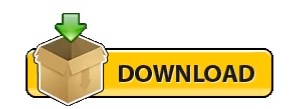
csv file for viewing/manipulation in Excel using: Get-CsConnections.ps1 -Pool -FilePath InstallationĮxecution Policy: Third-party PowerShell scripts may require that the PowerShell Execution Policy be set to either AllSigned, RemoteSigned, or Unrestricted. ShowTotal option with totals and percentage Will show you unique client versions, their user agent, and the number of connections for each: If I can find an auto-detect method for server versions, I’ll include that in a later build. The script automatically determines the version (2010 or 2013) of the pool, and uses the correct query. Run the script specifying the front end pool or server to target: Get-CsConnections.ps1 -Pool Syntax Get-CsConnections.ps1 ] ] ] ] ] ]
Tons more info in updates and releases following that. Added support for Lync Server 2013, which uses a different query than Lync Server 2010. This can help you determine who is connecting with what versions, which is helpful when looking into licensing, upgrades, etc. Added a feature to show just a specific client version number, and the users connected with that client version. Renamed the script to Get-CsConnections.ps1 and some of the functions to the normal verb-noun format. This appears to work fine if the Lync servers and user running the script are both in the same domain. Accounted for the pool parameter being just a NetBIOS name by adding the $env:userdnsdomain to the NetBIOS name to create the FQDN. That way, the script will still run fine if it’s run from an ordinary PowerShell console. Did a prereq check to verify the Lync module is loaded. I noticed things didn’t always line up when the server FQDNs were really long, like those in child domains. Added a couple of functions, including one that cleans up some variables when exiting. So I added the feature to show the user list by running Get-CsConnections.ps1 -IncludeUsers. My needs didn’t require the user list – just the statistics at the beginning. Added a parameter to display the user list. So a user can run get-help Get-CsConnections.ps1 and get the help, just like any other script and cmdlet. Removed the help function and the header block and inserted comment based help. I took the script and updated it a little, including: 
This was quite informative as it could be used to show load balance distribution, client versions being used, and more. Cerise and Mahmoud Badran came up with a script to show Lync connections, and the users connected.




 0 kommentar(er)
0 kommentar(er)
